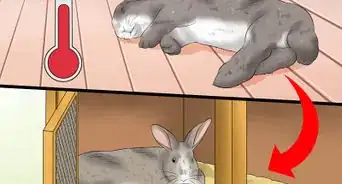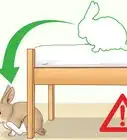This article was co-authored by Pippa Elliott, MRCVS. Dr. Elliott, BVMS, MRCVS is a veterinarian with over 30 years of experience in veterinary surgery and companion animal practice. She graduated from the University of Glasgow in 1987 with a degree in veterinary medicine and surgery. She has worked at the same animal clinic in her hometown for over 20 years.
wikiHow marks an article as reader-approved once it receives enough positive feedback. This article has 12 testimonials from our readers, earning it our reader-approved status.
This article has been viewed 209,787 times.
Humans sweat. Pigs wallow in mud. Dogs pant. Rabbits don’t do any of these when they get too hot. In the wild, rabbits disappear into brush and burrow into the dirt in order to avoid the sun. Their entire bodies are covered in fur with the exception of their eyes, which means that finding shelter is their only option to keep cool. If you’ve adopted a pet rabbit, be sure to keep it in a relatively cool environment. Room temperature is fine, but anything hotter has the potential to overheat your bunny.
Steps
Creating a Cool Environment
-
1Monitor the temperature. The ideal temperature for a rabbit is between 55 and 70 degrees Fahrenheit. They can tolerate temperatures as high as 85 degrees Fahrenheit, if absolutely necessary, but anything higher will increase the risk of heat stroke.
- If you keep your rabbit outdoors, pay attention to the temperature. Summertime is the most common time of the year to be concerned. If your rabbit is left outdoors in a pen or a cage during the summer months, its fur will trap the sun’s heat, causing it to heat up quickly.
- Keep your rabbit’s cage out of the sun. Cover any windows with blinds and curtains if necessary. If this doesn't make a difference, consider moving the cage to a cooler part of the house, such as a basement. If you have a window air conditioning unit, you can close the doors to that room and keep the bunny there. If you have central air conditioning, you may want to close some vents and direct the cool air to the rabbit room to manage the electricity bills. You can also purchase standing air conditioning units for a particular room.[1]
-
2Keep your rabbit cage well-ventilated. Use fans to cool your rabbit. Position an oscillating fan so that it blows in the rabbit cage, but not directly on the rabbit. This will create a breeze to cool your rabbit down. Make sure that your rabbit can escape the fan if it chooses. You can build a hiding place for the rabbit with a cardboard box. [2]
- Be careful that the rabbit doesn't chew on the cords. This can be quite hazardous.
- A wire covered cage allows air to flow freely from all sides. If your rabbit is outdoors in a hutch keep them in the shade and allow for cover without compromising ventilation. Bedding should be absorbent and non-toxic like straw, aspen shavings, CareFresh (recycled paper), or wheat-based like Eco-Straw. These materials air out easily and don’t retain heat.
- A circulating ceiling fan above the cage is another option. Used in combination with floor fans, ceiling units can effectively ventilate your rabbit’s area.
Advertisement -
3Hang a wet towel over top of your rabbit cage. This is especially effective in combination with a running fan. Not only will the towel provide shade, but the cool moisture will help as well.
- Take a normal sized shower towel (roughly 2.5' x 3.5'). Soak it in cool water. Wring it out and place it on top of the cage. Try to cover the entire cage with the towel. You want to make sure that you don't obstruct the cage's ventilation. Make sure that the towel is not still dripping either. You don't want to soak your rabbit.[3]
-
4Use ice to cool down its cage. Put some ice packs underneath your rabbit cage. This will cool the bottom of the cage. You can also freeze a water bottle and place that inside the cage to create a cool spot for the rabbit to lie against when it is too hot. Never apply ice directly to the rabbit's body. Doing so may lower your rabbit’s temperature too quickly.[4]
-
5Limit exercise time to morning and evening hours when it's cooler both indoors and outdoors. Rabbits should get at least a couple hours of out-of-cage play time a day. Your rabbit won't feel like running and playing as much if s/he is very hot.
Treating an Overheated Rabbit
-
1Check for common signs of heat exhaustion. Your rabbit's ears are the most important to pay attention to. When rabbits overheat, blood vessels in their ears swell and cause a general redness to appear. This is a great indicator of heat stroke in rabbits. An overheated rabbit may also have one or more of the following symptoms:[5]
- Wet fur below the nose
- Heavy and fast breathing
- Flared nostrils
- Sprawled out on the floor
- Hot ears and feet
- Inactive and not as alert as usual (lethargic)
- Eyes half closed[6]
-
2Brush your rabbit's fur. Rabbits shed a lot. Normally, they clean themselves and remove all the excess fur and dander. If your rabbit is shedding and not cleaning itself properly, this extra fur can act as another layer of insulation. In the winter, this works well for a rabbit. In the summer, it can lead to heat exhaustion.
- Brush your rabbit from head to posterior. Keep your strokes light. You don’t want to remove too much fur or hurt your rabbit. Do so during the summer months regularly.[7]
-
3Keep your rabbit hydrated. Place small ice cubes in your rabbit's water bottle to lower its temperature. If you have to leave your rabbit for a long period of time in warmer temperatures, this is a good step. Over the course of the day, the water will remain cooler for longer as the ice cubes melt. Dehydration can lead to heat stroke more easily in rabbits. If your rabbit is overheated, it will look for ways to cool itself off. If its water is colder than usual, it will seek it out and drink more to cool itself down.
- Give your rabbit veggies to help keep it hydrated. Soak small carrots, celery stalks, and other vegetables that your rabbit enjoys in water and then place them in your rabbit’s cage. This way your rabbit will get additional water through its food.[8]
-
4Do not submerge your rabbit in icy water. It is ok to dip its feet in water, but don't completely dunk it in it. Rabbits by nature are not strong swimmers. You may think that a quick dunk will cool them off, but in reality, it may exacerbate your rabbit's condition. The shock of the water may cause anxiety, which will elevate your rabbit’s core temperature.
- You can lightly mist your rabbit with water, but don't drench it (see next step).[9]
-
5Lightly mist your rabbit with water or a rubbing alcohol/water solution. Mix 1 part 50% rubbing alcohol and 3 parts water in a spray bottle; then spritz the solution on the outside of the rabbit's ears and on the top of the paws. Wet them well and the evaporation will cool the rabbit tremendously. (The alcohol just speeds evaporation.)
-
6See your veterinarian. Try calling your vet first. He may ask you to try different cooling measures before you bring your rabbit in for an exam. He’ll probably suggest many of the tips included above. If you’ve already tried all of these tips, tell your vet so and then proceed to bring your rabbit into the clinic.[10]
Things You'll Need
- Air Conditioning (optional)
- Fan
- Damp towels
- Small ice cubes
- Ice packs
- Frozen water bottles (Gatorade bottles or empty soda bottles filled with water work as well)
- Spray bottles filled with cool water
- Rubbing alcohol (isopropyl alcohol)
- Rabbit brush
References
- ↑ http://www.catsandrabbitsandmore.com/keeping_rabbits_cool
- ↑ http://www.merckvetmanual.com/mvm/exotic_and_laboratory_animals/rabbits/noninfectious_diseases_of_rabbits.html?qt=heat%20stroke%20rabbit&alt=s
- ↑ http://www.catsandrabbitsandmore.com/keeping_rabbits_cool
- ↑ http://www.bio.miami.edu/hare/sickbun.html
- ↑ http://www.veterinarypartner.com/Content.plx?P=A&A=502&S=5
- ↑ http://www.merckvetmanual.com/mvm/exotic_and_laboratory_animals/rabbits/noninfectious_diseases_of_rabbits.html?qt=heat%20stroke%20rabbit&alt=s
- ↑ http://rabbit.org/faq-grooming/
- ↑ http://www.humanesociety.org/animals/rabbits/tips/rabbit_vegetables.html
- ↑ http://www.catsandrabbitsandmore.com/keeping_rabbits_cool
About This Article
To keep a pet rabbit cool, make sure its cage isn't in direct sunlight, and consider moving it to a cooler location, like a room with air conditioning. You can also set up a fan near your rabbit's cage to keep it well-ventilated. Or, you can drape a cool, wet towel over the cage and place an ice pack underneath it to cool your rabbit off. For more advice from our Veterinary co-author, like how to help an overheated rabbit, scroll down.
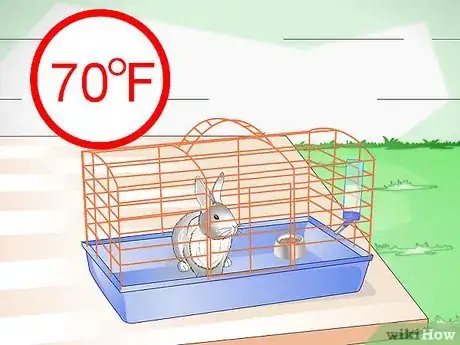
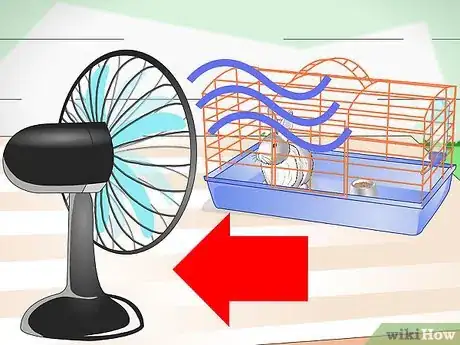
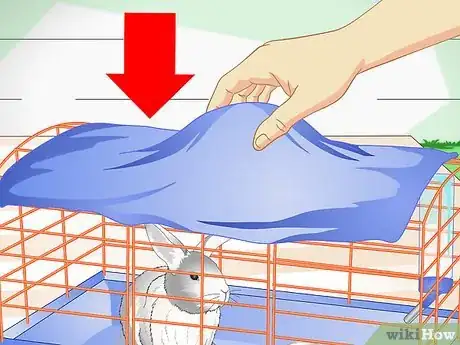
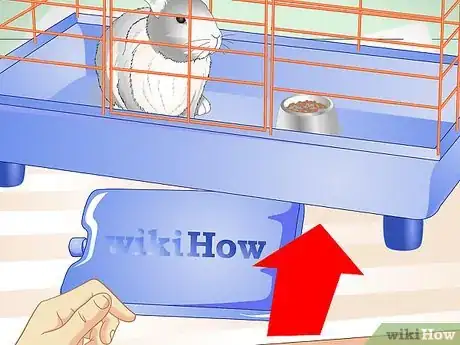
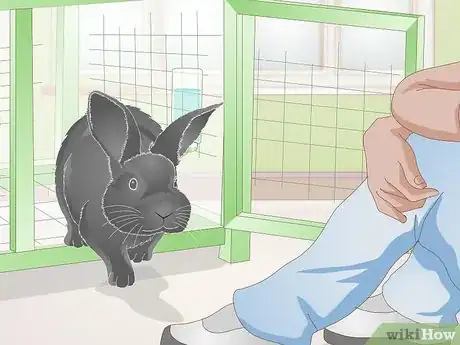
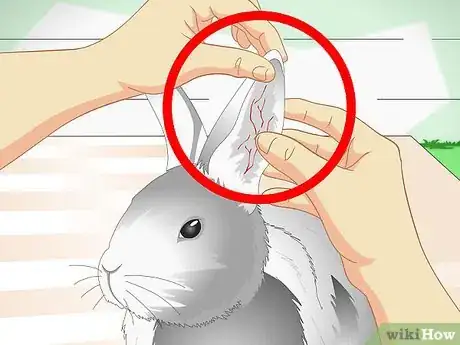

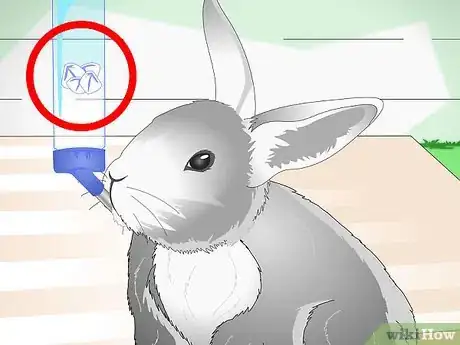
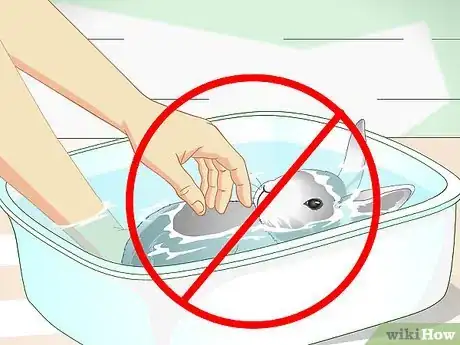
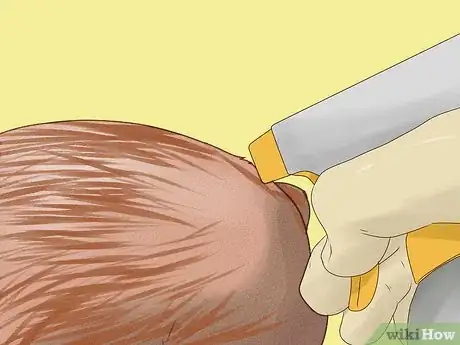
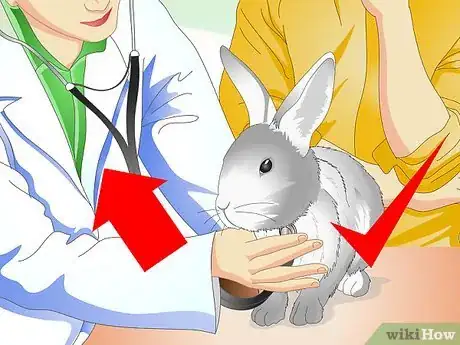
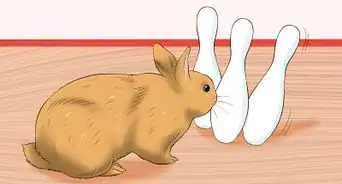





-in-Rabbits-Step-12.webp)


